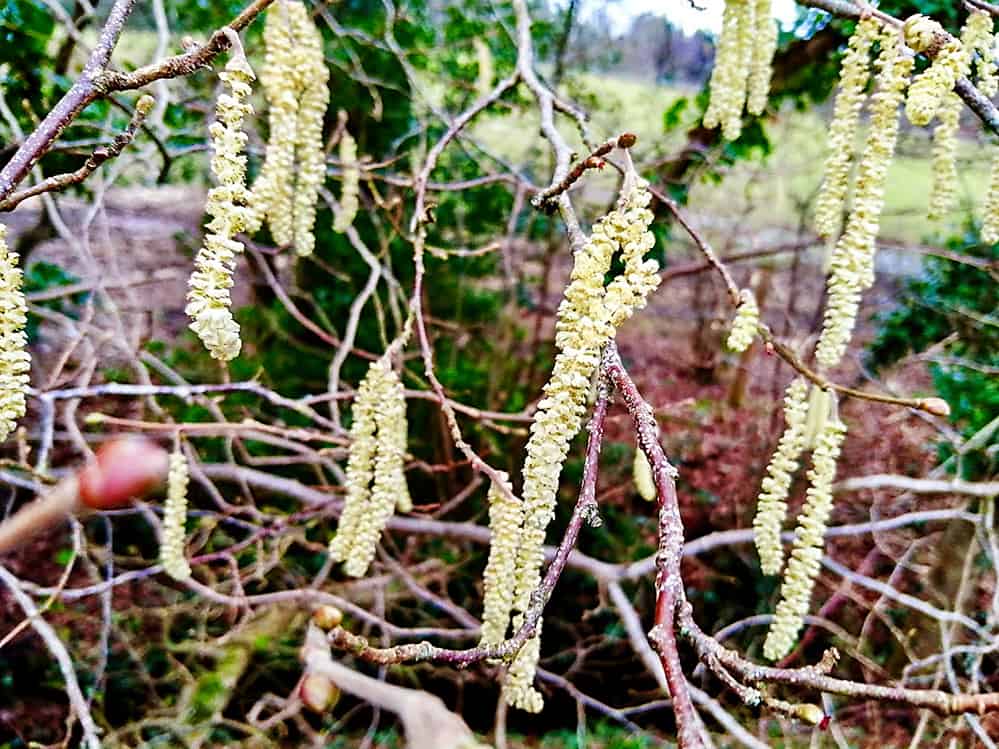Wildlife writer Jane Adams is trying hard not to be stuck in the January gloom, and instead to look for the signs of new life

It’s a dark, wet, and windy winter day. I sit in my study, sipping a hot mug of tea, listening to the rain clattering on the window.
Despite the gloomy weather, I know that just outside, in the hedgerows and woods, new life is stirring. The trouble is, it’s not always easy to see.
Last year I tried to go for a half-hour walk every day. But on days like today it usually turns into a quick stomp around the block; head down, collar up, and hands wedged deep into my coat pockets. When I stumble in through the back door and my husband asks if I’ve seen anything on my walk, it’s really no surprise he gets a glare from under my sopping wet fringe.
He’s right though – there’s plenty to see if I just look up.

Images this page: Jane Adams
January is a time when the stumpy tails of hazel catkins start to lengthen and flower. Each dangling male bloom has around 240 individual flowers, and if you run one through your fingers, it feels like a string of tiny beads. On breezy days, the pepper-fine pollen drifts onto neighbouring female flowers, and pollination occurs. Just look further up the same twigs of the dangling clumps of male catkins and you’ll find the delicate, vivid red female blooms (always above the male flowers to prevent self-pollination). Though slightly tricky to spot, they’re well worth a look. Later in the year, these little red pollinated flowers will develop into clusters of hazelnuts.
The nuts provide food for a myriad of wildlife from the aptly named hazel dormouse to birds such as woodpeckers and nuthatches, who wedge the nuts into tree crevices and use their beaks to crack the hard outer shells to reach the soft, nutritious nuts within.
For now, though, the golden catkins cascading from hedgerows onto Dorset’s country lanes are a welcome sight on a cold winter’s day. And if, like me, you’re still stubbornly looking down, try looking under a hazel tree – according to ancient folklore, it’s one of the best places to find a fairy.

Hazel (Corylus avellana)
Hazel is often coppiced, but when left to grow, trees can reach a height of 12m and live for up to 80 years (if coppiced, hazel can live for several hundred years)
Hazel was grown in the UK for large-scale nut production until the early 1900s. Cultivated varieties (known as cob nuts) are still grown in Kent, but most of our hazelnuts are now imported.
As well as its nuts or ‘cobs’, hazel wood can be twisted or knotted, and historically had many uses; thatching spars, net stakes, water-divining sticks, hurdles and furniture.
Hazel has a reputation as a magical tree. A hazel rod is supposed to protect against evil spirits, as well as being used as a wand and for water-divining. In some parts of England, hazelnuts were carried as charms and/or held to ward off rheumatism. In Ireland, hazel was known as the ‘Tree of Knowledge’, and in medieval times it was a symbol of fertility.


